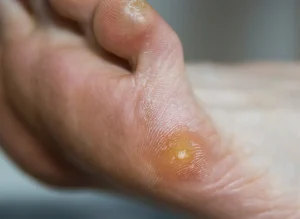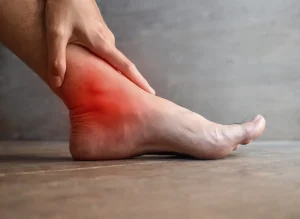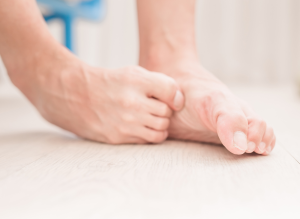Ingrown toenails are a common yet often misunderstood foot ailment. They can cause significant discomfort and, if left untreated, may lead to more severe complications.
What is an Ingrown Toenail?
An ingrown toenail, medically known as onychocryptosis, occurs when the edge of a toenail grows into the surrounding skin. This condition most commonly affects the big toe and can lead to redness, swelling, and pain. In more severe cases, it may cause infection, resulting in increased pain, discharge, and difficulty walking.
Why Do Ingrown Toenails Happen?
Several factors can contribute to the development of ingrown toenails, including:
Improper Nail Cutting: Cutting toenails incorrectly or in a way that doesn’t suit your toe and nail shape is the primary causes of ingrown toenails. You may be thinking, ‘Why is cutting your toenails so difficult?” or “How come my toe nails are different and need special treatment?” But the fact of the matter is everyone has different toe shapes, different nail bed shapes and different nail shapes. There is no “Correct” way or exact formular that will work for everyone, rather just ways of minimising your risk of developing them by understanding the things that most commonly cause them:
Number 1 – Cutting Toenails Too Short: When toenails are cut too short, the skin surrounding the nail can sit higher than the nail. The skin appears like its folded over the nail. As the nail grows forward it starts running into the surrounding skin then if left to continue growing (because the nail is hidden it doesn’t look long enough to cut) it will eventually “grow in” to the skin and cause pain.
Number 2 – Not Cutting Across the Whole Nail: Now this is a tricky one! Because some people’s toenails already sit quite deep in the surrounding skin and even if you don’t cut them too short you can still miss the corner or edge because its hidden under the skin. So when you cut across the nail it can look like you’ve cut the entire width of the nail but in reality there is a small “spike” left behind. The “spike” then grows into the skin as the nail grows. This is the most painful type of ingrown toe nail!
Number 3 – Tearing the Nail Off: This is more common than you think and 99% of the time you may have no problems tearing the nail off. But tearing the nail comes with risk because you have no control over how far back the nail tears. That is when the 1% occurs and the nail is torn too far back or you tore the layers off the nail and now the nail edge left behind is thin and sharp. Either way, eventually the 1% will happen.
Number 4 – Injury: Trauma to the toenail, such as stubbing your toe or dropping something heavy on it, can lead to an ingrown toenail. But this form of ingrown is acute (when it happens, you know about it straight away). It is best to have this type of injury looked at and cleaned up early on!
How Can Podiatrists Help?
If you’re struggling with an ingrown toenail, we’re here to help. This is how we can assist you:
In-Clinic Nail Cutting
As we talked about previously, one of the most effective ways to prevent and treat ingrown toenails is proper nail cutting. As podiatrists we are trained to trim your nails correctly, ensuring they grow in the right direction and are cut in such a way that they do not grow into the skin.
Long-Term Treatment Options
For those chronic ingrown toe nails that keep coming back over and over, we offer permanent partial nail removal:
- Partial Nail Avulsion: In more severe cases, a minor surgical procedure may be necessary to remove a portion of the nail. This procedure is performed under local anaesthetic to minimise discomfort. The goal of this treatment is to narrow the nail plate permanently so that the new edge is no longer deep or running into the skin. You can read more about this treatment option here.
When to See a Podiatrist
While some ingrown toenails can be managed at home, it’s essential to seek professional help if:
- You experience severe pain, swelling, or signs of infection.
- If the skin along the edge has a bulge or is puffy and angry.
- The condition recurs frequently or every time you cut your nails.
- You have underlying health conditions such as diabetes



